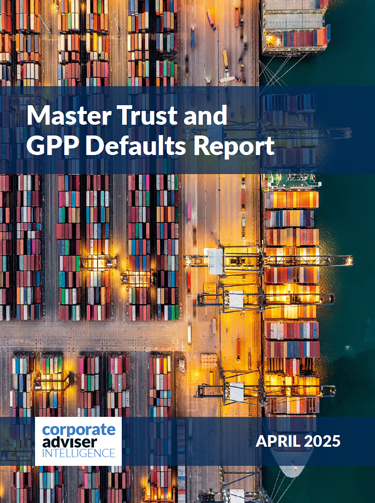Corporate advisers examining asset allocations for defined contribution pension schemes have historically found their choice severely restricted when considering allocating to illiquid assets.
The Financial Conduct Authority’s conduct of business rulebook discouraged underlying funds from generating returns for “linked long-term contracts of insurance” through allocating assets to illiquids under its permitted links rules.
Assets such as infrastructure, property, venture capital and corporate loans, were among the sectors where DC pension schemes could only gain limited exposure, due to regulatory concerns that people may not be able to gain access to their money, if they needed to, at short notice.
Then, in December 2018, the regulator published a consultation paper on proposed amendments to these so-called permitted links rules. It outlined plans to permit new investments within underlying funds, and to relax the limits on the proportion of assets that could be held in land or property.
“Illiquid assets in DC is certainly a hot topic; the consultation has had our clients interested, and asking questions,” says River & Mercantile Solutions head of defined contribution Niall Alexander.
“Many schemes are finding the barriers to investment are too great unless the scheme manages cashflows effectively to maintain daily pricing or daily liquidity, by having large-scale, in house management, or employing a fiduciary manager.”
Many DC schemes, outside ofthe very largest, employ platforms to make their investments, which adds to the regulatory difficulties. Most platforms won’t accept funds which don’t have daily dealing, as their systems are unable to accommodate non-daily pricing.
However, Altus Consulting head of retirement strategy Jon Dean says there are potentially ways around this, as seen after the UK’s vote to leave the European Union, which resulted in some property unit trusts putting a temporary block on withdrawals.
“Synthetic pricing could be used for Oeics, or illiquids could be invested in via investment trusts,” he says. “In the wake of the Brexit vote, when withdrawals from many property unit trusts were suspended through loss of liquidity, investment trusts could still be traded on an exchange, at discounted rates.”
Decision implications
With the consultation having closed at the end of February, a new concrete ruleset is expected in the coming weeks, but from the proposals outlined in the consultation, most are expecting a more relaxed attitude towards the proportion of funds that can be held in land and property.
There is also expected to be greater flexibility on investing in unlisted securities and in long-term assets, such as wind farms.
“We can expect clearer guidance from regulators around the accessibility of illiquid assets through DC platforms, which has historically been an area of interpretation,” explains Aon head of defined contribution investment James Monk.
“The Patient Capital consultation will also help increase the flexibility of asset managers to access more niche areas of the market.”
While this will be welcomed by many, the outlined regulatory changes may not be quite as far-reaching as hoped, according to XPS Pensions Group principal Guy Plater. He says that many of the barriers preventing schemes embracing illiquid assets are non-regulatory.
“We believe that barriers will continue to ensure there is limited traction for their use, even with the introduction of the proposals contained within the consultation,” he suggests.
“These include cost, exacerbated by the potential lowering of the default charge cap, transparency of charges, and the use of daily pricing and daily dealing for DC investments in general.”
And even if schemes do navigate these obstacles, there is the even bigger threat of asset managers underperforming in what is new territory, according to Monk, who says any relaxation in the rules, could lead to fund managers operating in areas where they are still finding their feet.
“This has the potential for managers to start entering markets where they are relatively inexperienced and have the potential to be burnt,” he says. “We must look to identify the quality managers able to access these markets appropriately.”
Worth the risk?
With so many headaches facing those tempted to embrace illiquid assets, schemes may be tempted to steer clear altogether. But, in doing so, they could lose out substantially, according to research conducted by JLT Employee Benefits.
The consultancy’s head of DC investment consulting, Maria Nazarova-Doyle, explains: “They return more than public markets as a way of compensating investors for the additional risk of having their money tied in for a longer time.
“Detailed governance is required around these types of investments as some of these could be much riskier than public markets, so care should be taken to understand all applicable risks and diversify the exposures appropriately.”
While the extra governance burden may sound substantial, it is still worth investing energy into building a degree of comfort with understanding the personality traits of illiquids, says Nazarova-Doyle.
“A 20 per cent allocation to illiquid assets, from an early stage, can boost members’ pots by 8 to 12 per cent by the time they are 57, after fees. In the current environment of major under-saving for retirement in the UK, this offers a strong investment case for allocating to illiquids.”
In addition to the attractive return potential, illiquids offer other benefits. These were trumpeted in a statement recently, where Padmesh Shukla, head of investments at the £11bn Transport for London Pension Fund, noted that “real assets provide strong portfolio diversification, in many cases providing inflation hedge and secure income.”
Bespoke approach
So, for those looking to make the most of the new rules, what constitutes the best approach for maximising additional returns?
While it may be tempting to embrace the new freedom afforded by the regulators and try out radical new strategies, senior consultants say that any new addition should instead be done in a fashion that is consistent with the original objectives of the scheme.
“Illiquid asset classes can vary significantly in their investment characteristics and schemes should ensure that they are able to diversify across multiple illiquid asset classes in a way that is consistent with their specific objectives,” advises Plater.
Determining the best way to gain access to the benefit of illiquid assets will also depend on the size of each scheme, according to Plater.
“For very large schemes, this can be achieved using direct investment into bespoke solutions or co-investment opportunities,” he says.
“Smaller schemes, however, that are only able to allocate £50m or lower, are likely to find it very difficult to enter in this way, and would seek to invest via a fund. This typically involves outsourcing the choice of individual managers for each particular asset class to an adviser or specialist.”
While the options for smaller schemes may seem limited in the current environment, there is appetite among industry players to embrace innovation once the new regulatory landscape is confirmed.
Alexander explains: “To date, we have not seen large amounts of innovation. We increased the proportion of our DB scheme clients’ assets under management invested in alternatives to around a quarter in 2018 and made a smaller allocation in DC schemes where we hold a fiduciary duty.
“We would have liked to do something similar for the DC schemes we advise on, and don’t operate a fiduciary mandate, but found that the barriers to investing in illiquid/alternative assets dominated.”





